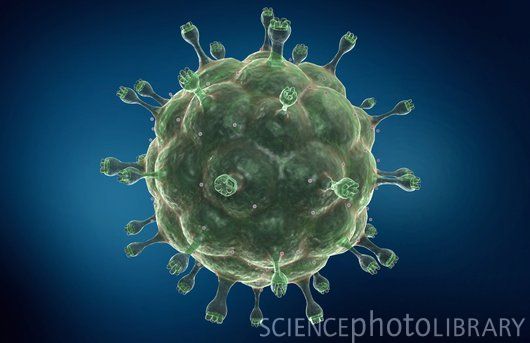美欧科学家找到防止艾滋病毒破坏免疫系统的方法,这项发现可能提供了研制艾滋病疫苗的新途径。

去除胆固醇的HIV毒无法对免疫系统进行破坏
在欧洲和美国艾滋病毒(HIV)实验室工作的研究人员发现,如果去除病毒隔膜的胆固醇,病毒就无法对免疫系统进行破坏。
研究项目负责人、伦敦帝国理工学院的博阿索说:“就像军队失去了武器,但还有旗帜,所以敌人能够识别和攻击它。”
研究小组将研究如何使用这一方法,让病毒失去活性并研发出疫苗。
通常当人体感染艾滋病毒的时候,免疫系统会立即进行防御。但一些研究员认为,艾滋病毒可以造成免疫系统反应过度,结果产生了适应性免疫反应,降低了身体防卫能力。
周一(19日)发表在《血液》杂志的报告说,博阿索小组去掉了病毒隔膜上的胆固醇,结果发现这阻止了病毒触发免疫反应,进而促使免疫系统产生了由T免疫细胞引起的更强自身适应反应。
全球每年有180万人因艾滋病死亡,2009年发现的病毒感染者约260万。全世界目前共有3330万名感染者。
生物探索推荐论文摘要:
Over-activation of plasmacytoid dendritic cell inhibits anti-viral T-cell responses: a model for HIV immunopathogenesis
A delicate balance between immunostimulatory and immunosuppressive signals mediated by dendritic cells (DC) and other antigen-presenting cells (APC) regulates the strength and efficacy of anti-viral T cell responses. The human immunodeficiency virus (HIV) is a potent activator of plasmacytoid DC (pDC). Chronic pDC activation by HIV promotes the pathogenesis of the acquired human immunodeficiency syndrome (AIDS). Cholesterol is pivotal in maintaining HIV envelope integrity and allowing HIV-cell interaction. By depleting envelope-associated cholesterol to different degrees, we generated virions with reduced ability to activate pDC. We found that APC activation was dissociated from the induction of type I interferon (IFN-α/β) and indoleamine 2,3-dioxygenase-mediated immunosuppression in vitro. Extensive cholesterol withdrawal, resulting in partial protein and RNA loss from the virions, rendered HIV a more powerful recall immunogen for stimulating memory CD8 T cell responses in HIV-exposed uninfected individuals. These enhanced responses were dependent on the inability of cholesterol-depleted HIV to induce IFN-α/β.







